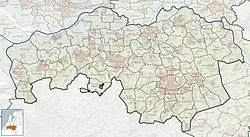
The Catholic Cathedral Church of St. John (Sint-Janskathedraal) of 's-Hertogenbosch, North Brabant, is the height of Gothic architecture in the Netherlands. It has an extensive and richly decorated interior, and serves as the cathedral for the bishopric of 's-Hertogenbosch.

Oploo is a village in the Dutch province of North Brabant. It is located in the former municipality of Sint Anthonis. Since 2022 it has been part of the new municipality of Land van Cuijk.

Terheijden is a village in the Dutch province of North Brabant. It is located in the municipality of Drimmelen, about 6 km north of Breda.
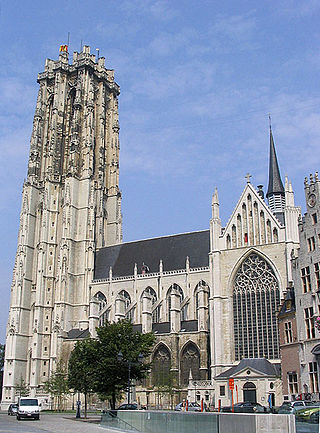
Brabantine Gothic, occasionally called Brabantian Gothic, is a significant variant of Gothic architecture that is typical for the Low Countries. It surfaced in the first half of the 14th century at St. Rumbold's Cathedral in the city of Mechelen.

Maaskantje is a village in the province of North Brabant, Netherlands. The village is part of the municipality of Sint-Michielsgestel, southeast of 's-Hertogenbosch.

Sint Hubert is a village in the Dutch province of North Brabant, in the former municipality of Mill en Sint Hubert. Since 2022 it has been part of the municipality of Land van Cuijk.

Het Noordbrabants Museum is an art museum in 's-Hertogenbosch, Netherlands.

Saint Quentin's Church is a Roman Catholic church located at the Naamsestraat in Leuven, Belgium. Its exterior is mainly Gothic with a Baroque entrance portal. The interior contains Baroque choir stalls and altars. The church is named after the Saint Quentin, who is regarded in the Catholic faith as a protector against a wide range of contagious diseases.

The Church of St. John the Baptist is a Catholic parish church located in the centre of Molenbeek-Saint-Jean, a municipality of Brussels, Belgium. It is dedicated to Saint John the Baptist, the patron saint of Molenbeek.

The Heuvelse kerk is a neo-Gothic Catholic church in the center of the Dutch city Tilburg. Dedicated to Saint Joseph, it is one of two major Catholic churches in the city center together with the Heikese kerk. It is located along the square Heuvel, after which it is named. A 1921 statue of the Sacred Heart is located in front of the building.

The Jheronimus Bosch Art Center is a museum located in the former New St. James Church on Jeroen Boschplein in 's-Hertogenbosch, the capital of North Brabant, in the Netherlands. Since 2007, there has been a permanent retrospective exhibition here on the life and work of the painter Hieronymus Bosch, who was born in the town. The venue is also used for concerts and conferences.

Bokhoven Castle was a big defendable castle in Bokhoven, the Netherlands. A moat and part of the northern wall of the outer bailey are all that reminds of the castle.

The Swan Brothers' House in 's-Hertogenbosch is a museum and the home of a famous medieval confraternity.
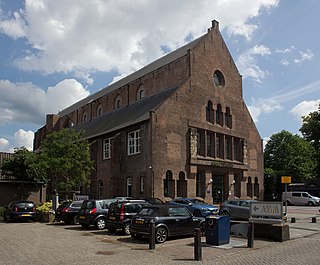
The Big Arsenal, in Dutch: Groot Tuighuis, in 's-Hertogenbosch, Netherlands, is also known as Old St. James Church, or Oude Sint Jacobskerk. It is the former location of the Noordbrabants Museum. It now houses the municipal heritage department and its storage. It is open to visitors four days a week.
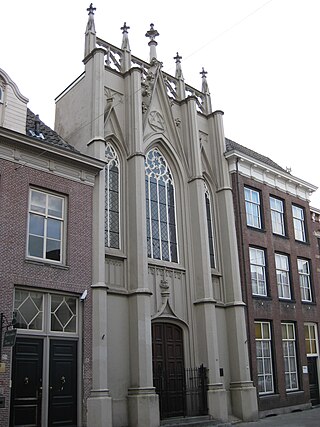
The Lutheran Church of 's-Hertogenbosch is a former church in 's-Hertogenbosch.

The Great Church or Protestant Church is located in 's-Hertogenbosch. It is the main Protestant church of 's-Hertogenbosch.

Haanwijk is an estate and nature reserve with a manor house near Sint-Michielsgestel in North-Brabant, Netherlands.

Sint-Michielsgestel is a village in the municipality of Sint-Michielsgestel, Netherlands.
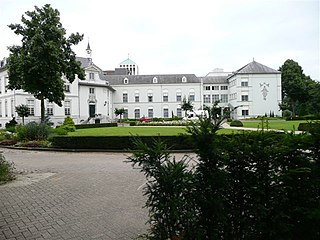
Boxmeer Castle is an originally 13th century castle in Boxmeer, North-Brabant, Netherlands. It is situated on a former island in the Meuse.

